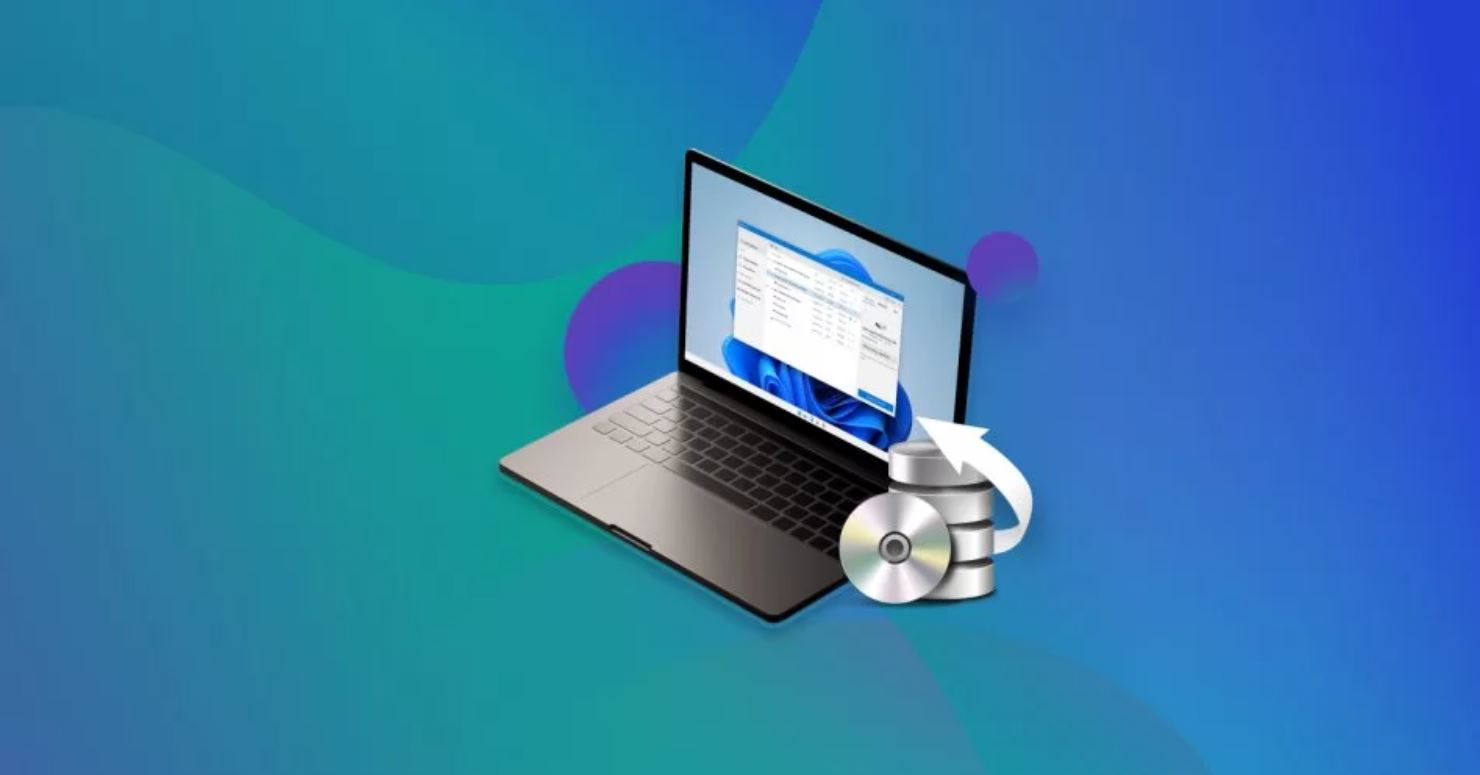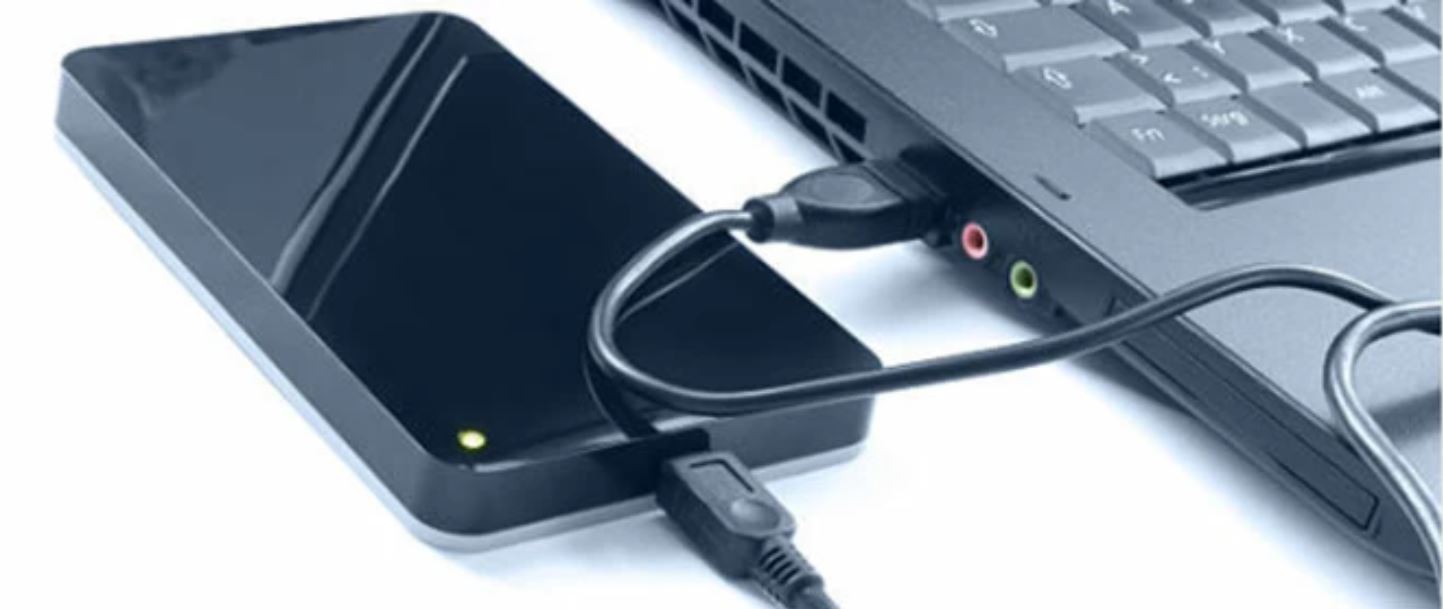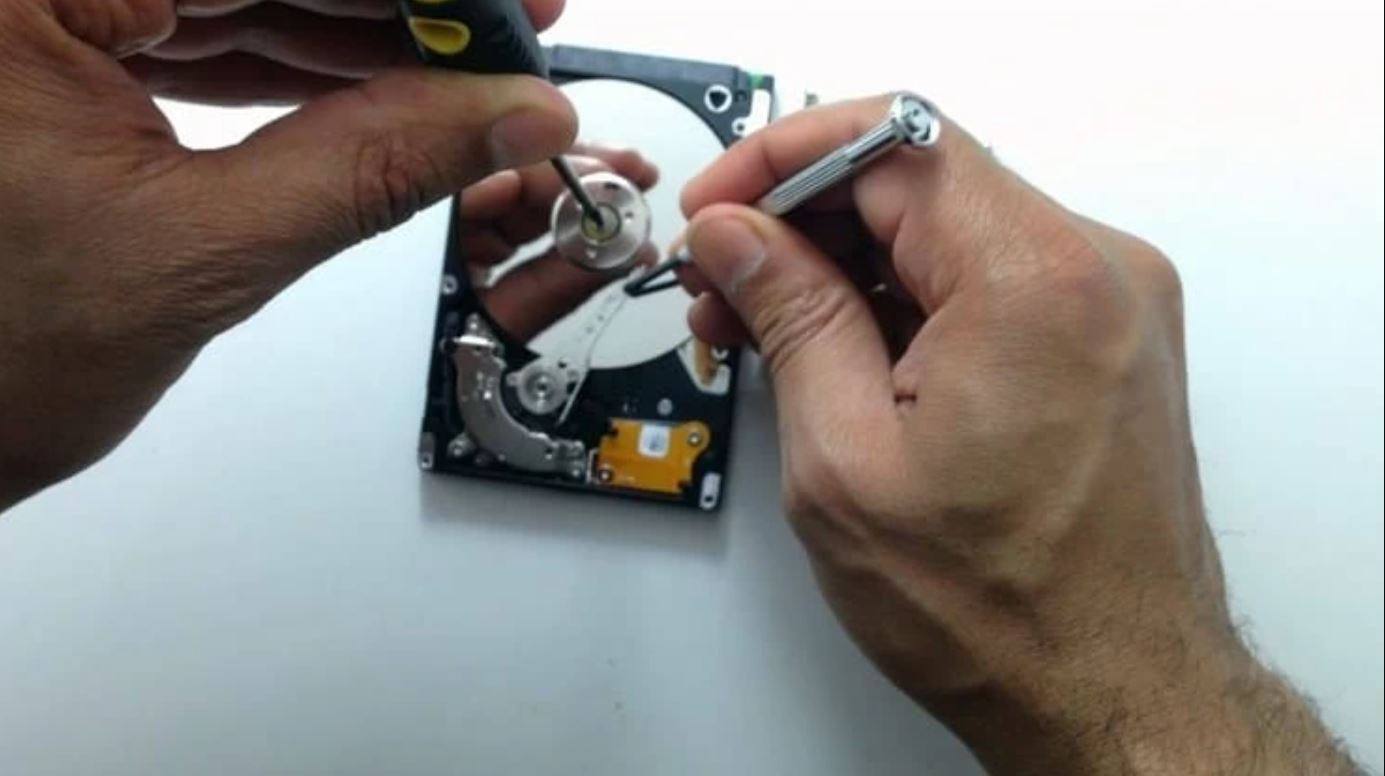Introduction
Welcome to the world of digital storage, where external hard drives play a crucial role in storing and safeguarding our valuable data. Whether you use it for backing up important files, transferring data between devices, or expanding your storage capacity, an external hard drive is a convenient tool that provides us with peace of mind.
However, despite their reliability, external hard drives are not immune to issues. From accidental file deletions to software malfunctions and physical damage, there are numerous factors that can lead to data loss on these storage devices. Losing important files can be a stressful experience, but the good news is that there are steps you can take to recover your data.
In this guide, we will explore the process of recovering files from an external hard drive. We will cover different scenarios of data loss, offer troubleshooting techniques, discuss data recovery software, and explore the option of seeking professional help. By following the steps outlined in this article, you will increase your chances of retrieving your lost files and minimize the risk of permanent data loss.
It is important to note that data recovery is not always guaranteed, and the success of the process depends on various factors such as the extent of damage, the specific cause of data loss, and the actions taken after the incident. However, by understanding the steps involved and being proactive, you can maximize your chances of recovering your valuable data.
So, if you’ve experienced data loss on your external hard drive and are eager to retrieve those important files, let’s delve into the world of data recovery and explore the techniques that can bring back your precious data.
Understanding Data Loss on External Hard Drives
Before diving into the process of recovering lost data, it is essential to understand the various factors that can lead to data loss on external hard drives. By understanding these factors, you can better prevent future data loss incidents and make informed decisions when it comes to data recovery.
One common cause of data loss is accidental file deletion. It’s easy to accidentally delete files or folders, especially when we are in a rush or not paying close attention to what we are doing. Emptying the Recycle Bin or Trash on your computer without double-checking its contents can result in permanent data loss.
Software malfunctions and system crashes are another frequent cause of data loss. If your computer or the external hard drive experiences a sudden shutdown or encounters an error, it can lead to data corruption or loss. These malfunctions can be caused by software glitches, viruses, or even power outages.
Physical damage to the external hard drive is another significant factor that can result in data loss. Dropping the device, exposing it to extreme temperatures or moisture, or mishandling it in any way can cause damage to the internal components, rendering the drive unreadable and leading to loss of data.
It is important to note that data loss on external hard drives can also occur due to logical issues. These issues can include file system errors, partition table corruption, or disk formatting errors. In these cases, the data may still be present on the drive, but it is no longer accessible without proper intervention.
Understanding the potential causes of data loss on external hard drives is crucial to effectively recovering your lost files. By identifying the specific cause of the data loss, you can choose the most suitable approach for recovery. In the following sections, we will explore different steps to help you recover your files based on the specific situation you are facing.
Step 1: Assessing the Damage
When faced with data loss on an external hard drive, the first step is to assess the extent of the damage. This will help you determine the best course of action for recovery and prevent further loss of data.
Start by carefully examining your external hard drive for any physical damage. Look for signs of physical impact such as dents, scratches, or loose connections. If you notice any damage, it’s crucial to handle the drive with care to avoid causing further harm.
Next, connect the external hard drive to your computer and check if it is detected. If the drive is not recognized by your computer, try connecting it to another computer or using a different USB cable or port. If the drive is still not recognized, it could indicate a more severe hardware issue.
If your computer recognizes the external hard drive but you cannot access the data, it’s important not to panic. There could be logical issues or file system errors preventing access to the files. In such cases, data recovery software can often help retrieve the lost data.
It’s also essential to consider the value of the lost data. Determine the importance and urgency of the files you need to recover. This will help you prioritize your recovery efforts and focus on retrieving the most critical information first.
It’s important to note that attempting to recover data on your own can sometimes worsen the situation. If you are unsure or uncomfortable with performing data recovery procedures, it is advisable to seek the assistance of a professional data recovery service. They have the expertise and tools to handle complex data loss scenarios without risking further damage to your external hard drive.
By thoroughly assessing the damage and understanding the limitations of DIY recovery, you can make an informed decision on how to proceed with the recovery process. In the next section, we will explore steps to determine the cause of data loss, which will further aid in the recovery process.
Step 2: Determining the Cause of Data Loss
Once you have assessed the damage to your external hard drive, the next step is to determine the cause of the data loss. Understanding the root cause will help you choose the most appropriate recovery method and avoid making any further mistakes that could jeopardize the chances of successful data retrieval.
Accidental file deletion is one of the most common causes of data loss. If you have accidentally deleted files or folders, check your computer’s Recycle Bin or Trash folder. You may find your deleted files there, and restoring them is as simple as right-clicking and selecting the “Restore” option.
If the files are not in the Recycle Bin or Trash, don’t panic just yet. There are still chances of recovering them using specialized data recovery software. Avoid any further write operations on the external hard drive to prevent overwriting the deleted files, which could make them irretrievable.
Software malfunctions or system crashes can also lead to data loss. If you suspect a software issue, try connecting the external hard drive to a different computer to see if it is recognized. If it works on another computer, the problem may lie with your system, and troubleshooting your computer’s software or operating system may help in recovering the data.
If your external hard drive is physically damaged, the cause of data loss is evident. Physical damage can include components such as the drive head, motor, or circuitry, which may require professional expertise to repair. Attempting to fix a physically damaged drive on your own might worsen the situation, so it’s best to seek the assistance of a professional data recovery service.
Logical issues, such as file system errors or disk formatting errors, can also result in data loss. These issues can cause the drive to be inaccessible or display incorrect storage capacity. In such cases, data recovery software can often help in restoring the lost data by repairing the file system or retrieving files from the formatted drive.
By determining the cause of data loss, you can choose the appropriate recovery method and increase the chances of successfully retrieving your files. In the following sections, we will explore basic troubleshooting steps and data recovery software that can aid in the recovery process.
Step 3: Basic Troubleshooting
If you’re faced with data loss on your external hard drive, performing some basic troubleshooting steps can help resolve common issues and potentially recover your lost files. Here are a few steps you can take before moving on to more advanced recovery methods:
1. Check the connections: Ensure that the cables connecting your external hard drive to your computer are securely plugged in. Try using a different USB port or cable to rule out any connection-related issues.
2. Restart your computer: Sometimes, a simple restart can resolve software conflicts or temporary glitches that may be preventing your external hard drive from being recognized or accessed.
3. Update device drivers: Outdated or incompatible device drivers can cause issues with external hard drive connectivity and accessibility. Check for any driver updates for your external hard drive and install them if available.
4. Run disk checking utilities: Most operating systems have built-in tools that can scan and repair errors on your external hard drive. In Windows, you can use the built-in “Check Disk” utility, while macOS has the “Disk Utility” tool. These utilities can fix file system errors and potentially make your drive accessible again.
5. Try on a different computer: Connect your external hard drive to another computer to check if the issue is specific to your computer or the drive itself. If the drive works fine on another computer, it indicates a problem with your system that may require further troubleshooting steps.
6. Consider data recovery software: If the above steps don’t resolve the issue and you still can’t access your data, it may be time to utilize data recovery software. There are various software options available that can scan your external hard drive and attempt to recover lost files. Make sure to choose a reputable software with positive reviews and follow the instructions provided carefully.
It’s important to note that these troubleshooting steps may not always be effective in recovering your lost data. If none of these basic troubleshooting methods work, it’s recommended to seek the assistance of a professional data recovery service. They have the expertise and tools to handle complex data loss scenarios and maximize the chances of successful recovery.
In the next section, we will explore the option of using data recovery software to recover your lost files.
Step 4: Using Data Recovery Software
If basic troubleshooting methods have not been successful in recovering your lost data from an external hard drive, it’s time to consider using data recovery software. Data recovery software is designed to scan your drive, locate lost files, and attempt to recover them. Here are the steps to follow when using data recovery software:
1. Choose reputable software: There are numerous data recovery software options available, so it’s important to choose a reputable and reliable program. Look for software that has positive reviews, a high success rate, and supports the file types you need to recover.
2. Install the software: Download and install the chosen data recovery software on your computer. It’s important to install it on a different drive than the one you are trying to recover data from to avoid overwriting any lost files.
3. Connect your external hard drive: Connect your external hard drive to your computer and ensure that it is detected by the operating system. Launch the data recovery software and select the external hard drive as the target for the recovery process.
4. Scan the drive: Run a full scan of the external hard drive using the data recovery software. This process may take some time, depending on the size of the drive and the extent of the data loss. The software will analyze the drive and locate any recoverable files.
5. Preview and recover: Once the scan is complete, the data recovery software will provide a list of recoverable files. Take advantage of the software’s preview feature to view the files before initiating the recovery process. This allows you to select and recover only the files that are important to you.
6. Choose a destination: When recovering the files, ensure that you choose a different storage location than the external hard drive you are recovering from. Recovering the files to the same drive might overwrite the lost data, making it irretrievable.
It’s crucial to note that the success of data recovery software depends on various factors, including the extent of data loss and any physical damage to the drive. It’s also important to act promptly and avoid using the external hard drive for any other purpose while running the recovery software.
If the data recovery software does not retrieve all of your lost files or if it fails to recover any files at all, it may be necessary to seek professional help from a data recovery service. These professionals have more advanced tools and techniques to handle complex data loss situations and improve the chances of successful recovery.
Now that you have an understanding of how to use data recovery software, let’s move on to the next section to discuss the option of seeking professional help for data recovery.
Step 5: Seeking Professional Help
If your attempts at recovering lost data from your external hard drive using basic troubleshooting methods or data recovery software have been unsuccessful, it may be time to consider seeking professional help. Professional data recovery services have the expertise and specialized tools necessary to handle complex data loss scenarios. Here’s what you need to know:
1. Evaluation and Assessment: When you contact a data recovery service, they will first evaluate the extent of data loss and assess the chances of successful recovery. They will provide you with a detailed report on the recoverability of your data and the projected cost of the recovery process.
2. Cleanroom Facilities: Professional data recovery services often maintain cleanroom facilities to handle physically damaged drives. These facilities provide a controlled environment with reduced dust and contaminants, minimizing the risk of further damage to the drive during the recovery process.
3. Advanced Recovery Techniques: Data recovery professionals have access to advanced tools and techniques that go beyond the capabilities of data recovery software. They can recover data from physically damaged or failed drives by performing intricate repairs, drive imaging, or even using specialized equipment to read data directly from the drive’s platters.
4. Security and Confidentiality: Reputable data recovery services prioritize the security and confidentiality of your data. They use industry-standard encryption and take measures to protect your files throughout the recovery process, ensuring that your sensitive information remains private.
5. No Data, No Charge: Many professional data recovery services operate on a “no data, no charge” policy. This means that if they are unable to recover your lost data, you will not be charged for their services. This offers peace of mind and ensures that you only pay for successful data recovery.
6. Cost and Timeframe: Professional data recovery services can be more expensive than DIY methods or software, but the investment is often worth it if your data is critical or irreplaceable. The cost of data recovery can vary depending on the severity of the data loss and the required techniques. The timeframe for recovery will also depend on the complexity of the case.
Remember that seeking professional help should be considered when you have exhausted all other options, and the data on your external hard drive is significant and cannot be easily replicated or replaced. It’s essential to choose a reputable and reliable data recovery service with a track record of successful recoveries to maximize the chances of retrieving your lost files.
In the next step, we will discuss preventative measures you can take to minimize the risk of future data loss incidents on your external hard drive.
Step 6: Preventing Future Data Loss
After successfully recovering your lost data from an external hard drive, it’s important to take measures to prevent future data loss incidents. By implementing preventive measures, you can minimize the risk of losing valuable files and ensure the safety of your data. Here are some steps you can take to prevent future data loss:
1. Regular Backup: One of the most effective ways to safeguard your data is by regularly backing it up. Create a backup schedule and make sure to backup your important files to an external storage device, cloud storage, or a combination of both. This way, even if you experience data loss in the future, you will have a copy of your files to restore from.
2. Avoid Accidental Deletion: Be cautious when working with files on your external hard drive. Double-check before deleting any files to avoid accidentally deleting important data. Consider enabling file recovery options or using a file recovery software that can help retrieve accidentally deleted files.
3. Safely Eject the Drive: Always eject your external hard drive properly before disconnecting it from your computer. This ensures that all data has been written and that there are no ongoing processes that may cause data corruption.
4. Keep Your System Updated: Regularly update your operating system, device drivers, and antivirus software to ensure that you have the latest security patches and software enhancements. Updated systems have better protection against malware and limit the risk of data corruption or loss.
5. Protect against Physical Damage: Handle your external hard drive with care and avoid subjecting it to physical shocks, extreme temperatures, moisture, or any form of mishandling. Consider investing in a protective case or pouch to prevent accidental damage during transport or storage.
6. Monitor Drive Health: Keep an eye on the health of your external hard drive. Regularly run diagnostic and health-checking software to identify any potential issues, such as bad sectors or early signs of failure. Addressing these issues promptly can help prevent data loss.
7. Use Reliable Power Sources: Ensure that your external hard drive is connected to a stable and reliable power source. Sudden power outages or fluctuations can cause data corruption or damage to the drive. Consider using a surge protector or an uninterruptible power supply (UPS) to protect your equipment from power-related issues.
8. Educate Yourself: Stay informed about common data loss causes and prevention techniques. Regularly update your knowledge of best practices for data management and protection to minimize the risk of future incidents.
By implementing these preventive measures, you can significantly reduce the chances of experiencing data loss on your external hard drive. Remember, prevention is always better than recovery when it comes to safeguarding your valuable files.
Now that you have learned about the steps to prevent future data loss incidents, let’s conclude this guide with a recap of the key takeaways and a final word on the importance of maintaining data backup and security practices.
Conclusion
Dealing with data loss on an external hard drive can be a stressful experience. However, by following the steps outlined in this guide, you can increase your chances of successfully recovering your lost files and minimize the risk of future data loss.
We began by emphasizing the importance of understanding the causes of data loss on external hard drives. By identifying the specific cause, whether it’s accidental deletion, software malfunctions, physical damage, or logical issues, you can choose the appropriate recovery method and avoid further complications.
We then explored the steps of assessing the damage, determining the cause of data loss, and performing basic troubleshooting. These steps help you evaluate the severity of the situation and attempt preliminary solutions before moving on to more advanced recovery methods.
If basic troubleshooting is ineffective, using data recovery software becomes the next step. We discussed the importance of choosing reputable software and outlined the process of scanning the drive and recovering the lost files. However, it’s crucial to keep in mind that the success of data recovery software depends on the specific circumstances and the extent of data loss.
If all else fails, seeking professional help from a data recovery service should be considered. These experts have the knowledge, tools, and facilities to handle complex data loss scenarios and maximize the chances of successful recovery.
Finally, we discussed the importance of preventing future data loss incidents. Regularly backing up your data, practicing safe file management, and implementing preventive measures can help you avoid the stress and frustration of losing valuable files in the first place.
Remember, data loss can happen to anyone, but with the right knowledge and proactive measures, you can safeguard your important files and minimize the potential impact of a data loss event on your external hard drive.
Now that you have a comprehensive understanding of the steps involved in recovering files from an external hard drive and preventing future data loss, you can apply this knowledge to effectively manage and protect your data in the future.

























